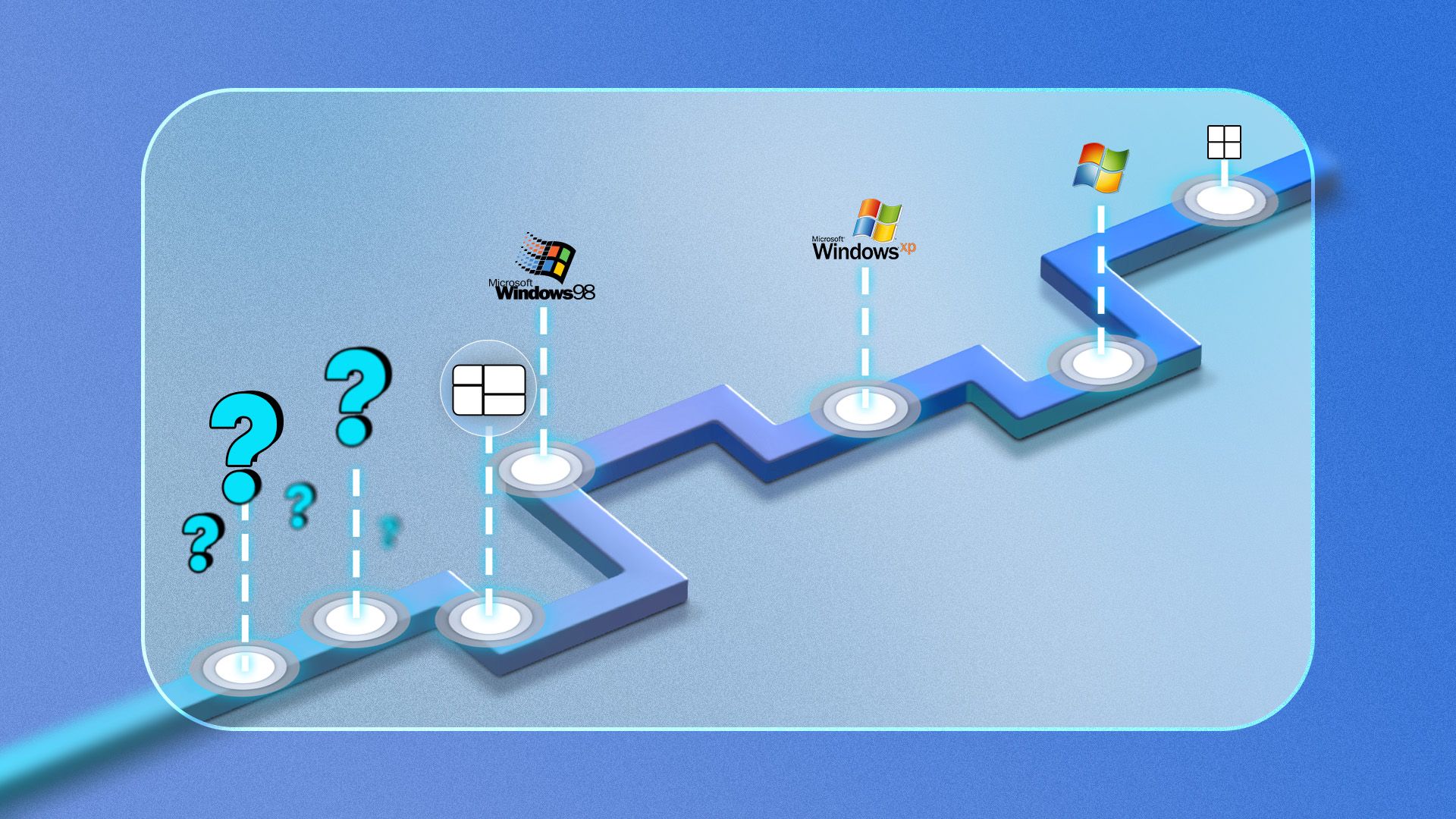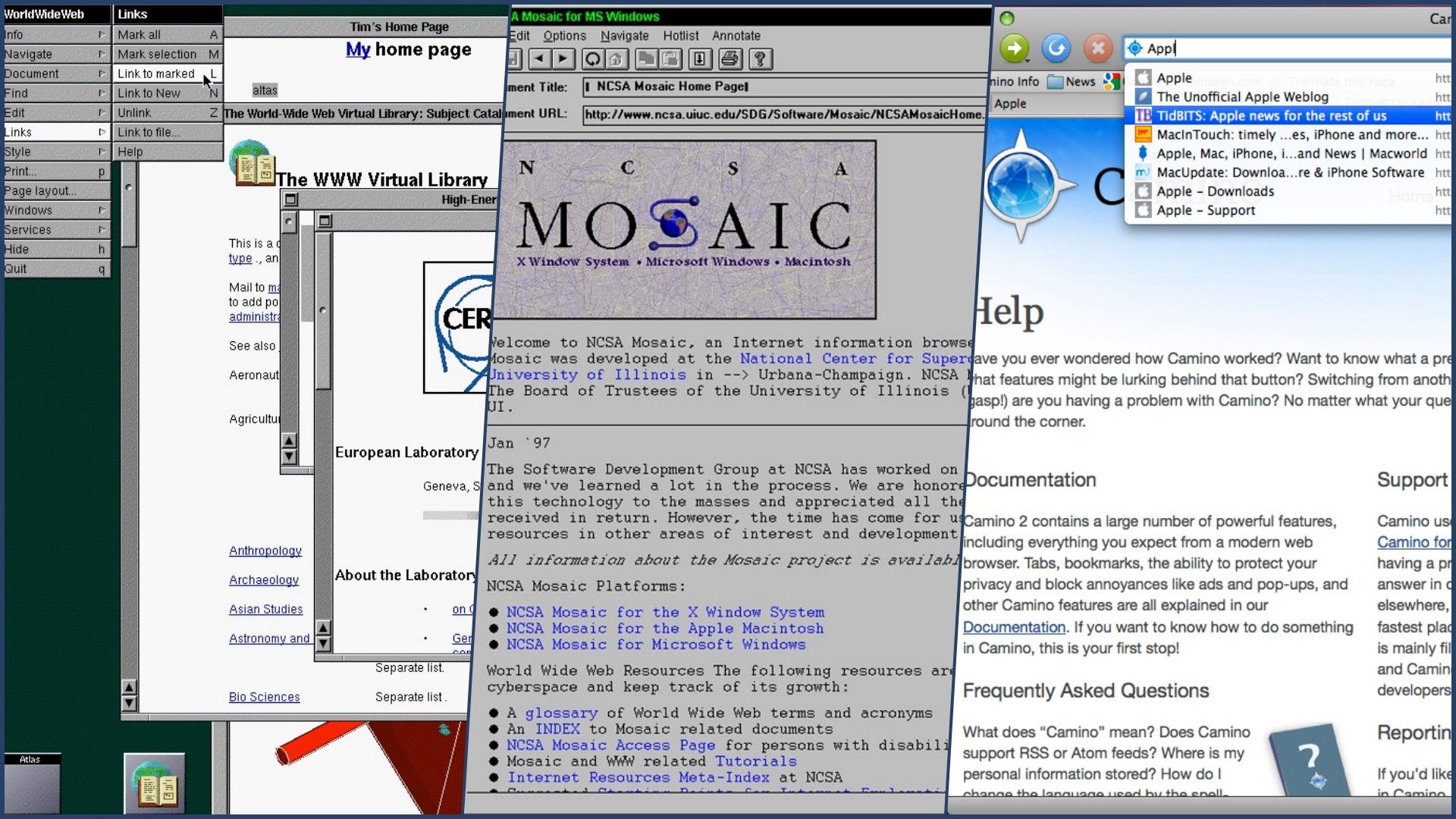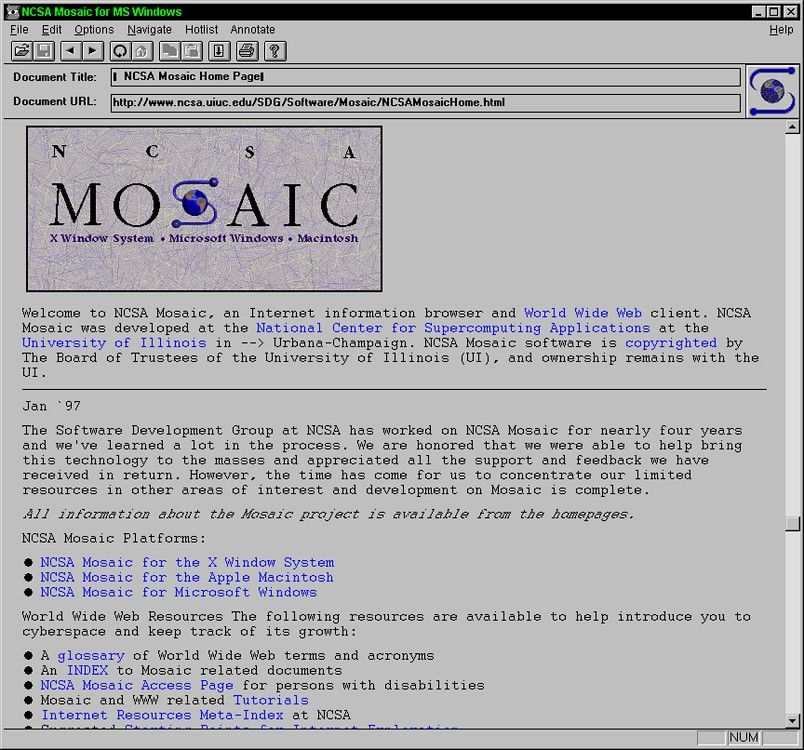Today, Internet Explorer might be the most well-known discontinued web browser, but the path to modern web giants like Chrome, Firefox, and Safari is filled with a rich history of innovation driven by a series of now-defunct browsers.
7 Netscape Navigator
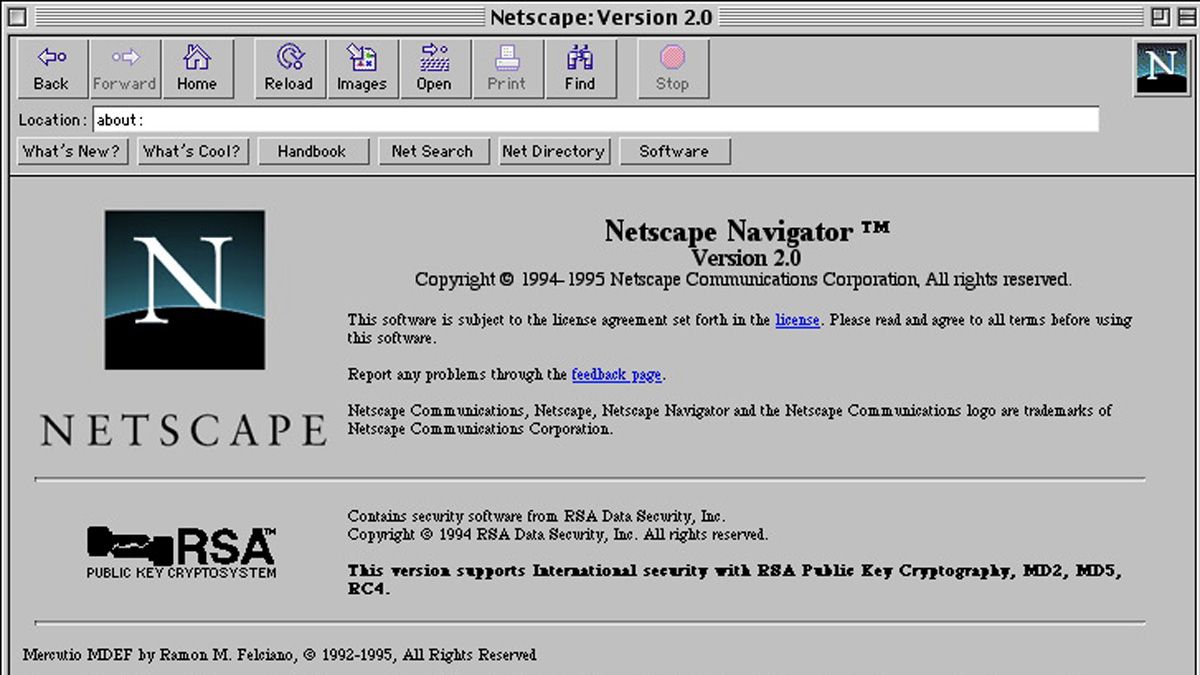
Netscape Navigator is arguably one of the most popular and influential web browsers on this list. Whether you are a millennial like me or someone who was on the web between the mid-90s and early 2000s, you likely have fond memories of Netscape.
It played a pivotal role in the early popularization of the internet and was the spiritual predecessor of the Firefox browser. It was launched in 1994 by Netscape Communications Corporation and quickly became the dominant browser on the market.
It was popular because of its speed, stability, and polished user interface. One of its most significant innovations was to display the text and graphics of a webpage as it downloaded rather than waiting for the entire page to load. This was a big deal in that era of slow dial-up internet.
Other Netscape innovations include technologies that are still integral to web development, such as JavaScript, SSL, and cookies.
Unfortunately, Netscape Navigator's dominance didn't last very long, as Microsoft introduced Internet Explorer (IE) in 1995. The bundling of IE with Windows caused Netscape's market share to plummet, and by 1998-99, IE had captured over 90 percent of the market.
This prompted Netscape to release its source code under an open-source license in a desperate move to leverage the power of the open-source community. The open-source project was named the Mozilla Project, which would later release Firefox that we know today.
Soon after, Netscape was acquired by AOL. But despite AOL's efforts, Netscape's market share continued to decline. The company announced the end of development and support for all Netscape browser products in December 2007, with support officially ceasing on March 1, 2008.
Although Internet Explorer overshadowed it in its later years, Netscape's contribution to the web can't be discounted, and it truly helped bring the World Wide Web to the mainstream.
6 Flock
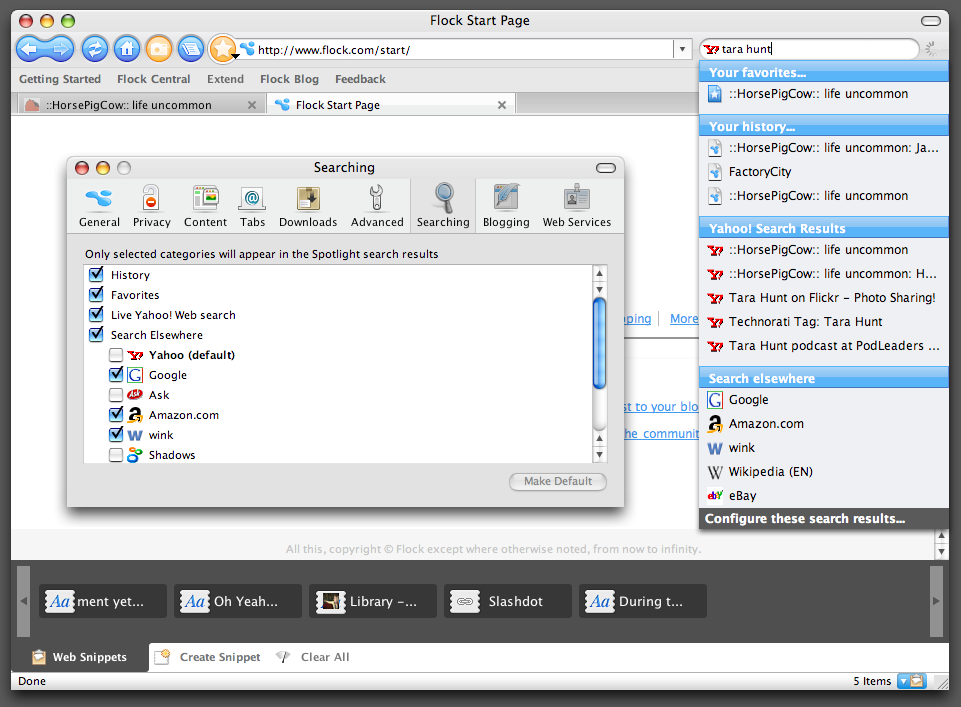
Although not as influential as some of the other browsers in this list, Flock was a unique web browser that integrated social media features directly into its interface. It was introduced in 2005, just as social media was gaining momentum and MySpace was still a prominent platform.
Flock aimed to make it easier for folks to share content and interact with their online communities without needing to visit individual social networking websites. Besides social media tools, the browser included a solid RSS reader, a blog editor, and a scrapbook, making it quite feature-rich but also somewhat bloated.
Although it initially leveraged Mozilla's Gecko rendering engine, the browser later adopted Chromium and its WebKit rendering engine to capitalize on the Chromium project's speed advantage to improve its performance.
However, changing rendering engines didn't change Flock's fortunes. While there was a lot to like about Flock and its unique approach, it never really gained mainstream prominence and remained a niche browser. It has faced intense competition from Chrome, Firefox, and IE.
The final nail in its coffin came from Zynga, which acquired the team behind the browser but left the browser. As a result, the browser's development and support were stopped in 2011.
5 Camino
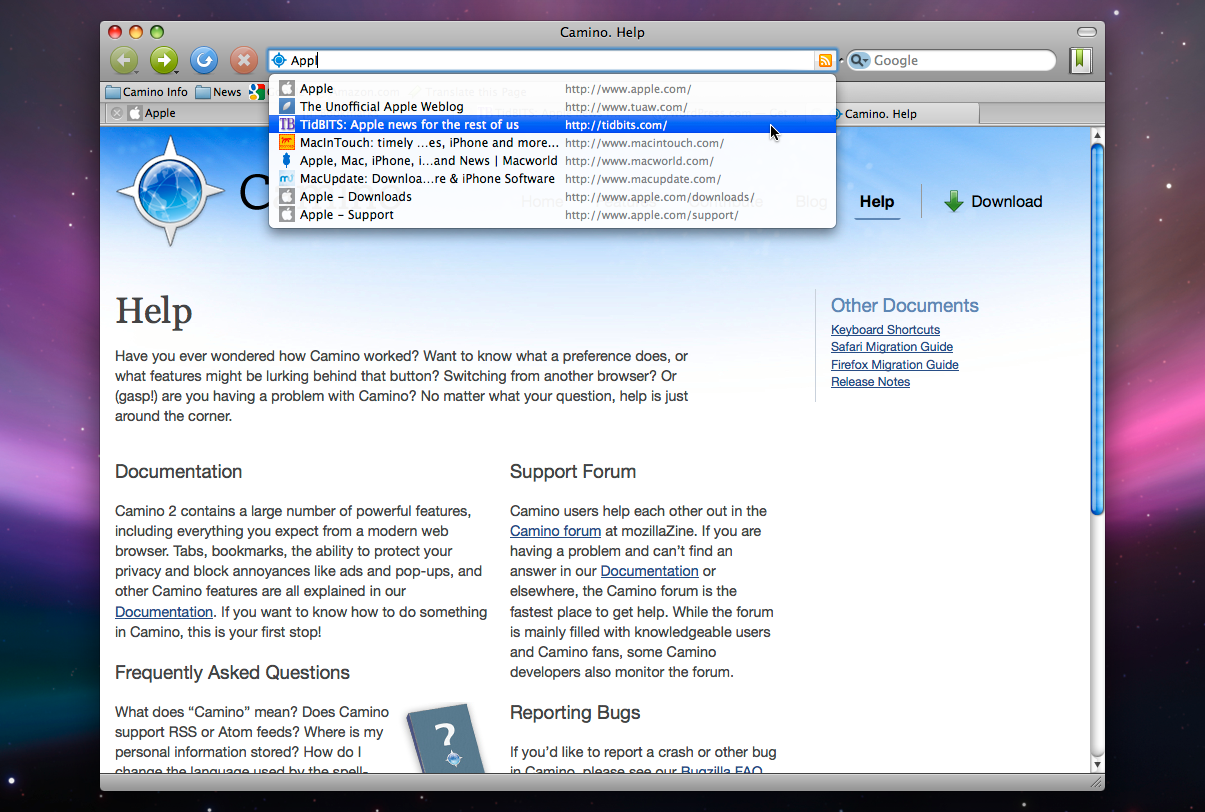
Camino was an open-source web browser developed exclusively for Mac OS X (later renamed to macOS). It was created by a team within Netscape, which took Mozilla's Gecko rendering engine and combined it with Apple's Cocoa programming toolkit. This helped the browser match the platform's Aqua aesthetic and deliver deeper integration with Mac OS X features, something that Firefox's own Mac version at that time didn't offer.
Camino was originally called Chimera, but it had to change its name due to a conflict. It also had AOL's backing for a brief period, but after the company discontinued the support, it became a community-driven open-source project.
Despite using the Gecko rendering engine, which was sometimes perceived as bloated, Camino aimed to offer a faster and leaner browsing experience. It also had built-in pop-up and ad blocking.
Although Camino was pretty popular on Mac OS X for a period, it started facing intense competition from Safari, which, thanks to significant investment from Apple, became more polished over time and capable of delivering similar performance. This, coupled with Safari's place as the bundled web browser on Mac OS X, led to a decline in Camino's market share.
Chrome's arrival on Mac in 2009, along with the improved OS X integration offered by Firefox, further eroded Camino's appeal.
Moreover, Camino faced resource constraints as more and more volunteer developers working on this open-source project either moved to other web browsers or just moved on. This led to its official discontinuation in 2013, marking the end of a browser that had once been popular on Mac OS X.
4 AOL Explorer
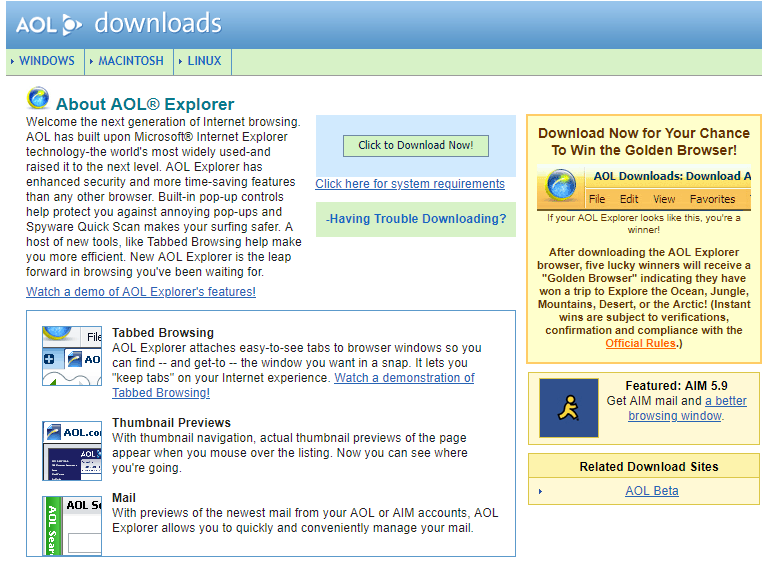
The AOL Explorer was essentially the company's second stab at a web browser after acquiring Netscape. It was introduced in 2005 and was based on Microsoft's Trident rendering engine, which was used in Internet Explorer. The primary reason behind the launch of AOL Explorer was to give the company more control over the browser's development and reduce its reliance on IE.
It offered several extras that you couldn't get with IE at that time, such as tabbed browsing, themes, page previews, and desktop widgets. However, these user-friendly and helpful features weren't enough to persuade people to switch to AOL Explorer from IE and Firefox, the latter of which was introduced a few months before AOL's offering and had quickly gained popularity and a decent chunk of the market.
As a result, AOL released the final version of the Explorer less than a year after its launch and discontinued the browser as a standalone product. It was still included in the company's OpenRide all-in-one hub as the web browser pane.
3 NCSA Mosaic
A spiritual predecessor to Netscape Navigator, NCSA Mosaic holds the distinction of being the first widely available graphical web browser and played a crucial role in popularizing the web in the 1990s. Developed at the National Center for Supercomputing Applications (NCSA) at the University of Illinois at Urbana-Champaign, its first version for Unix was released in April 1993, followed by versions for Mac and Windows in December 1993.
Before Mosaic, web browsers were mainly either text-based or displayed images in separate windows. So, the inclusion of inline images while displaying webpages was a pretty big deal for Mosaic. It also lowered the barrier to entry for non-technical users by offering an easy-to-navigate point-and-click interface.
Additionally, it supported multiple internet protocols, including FTP, WAIS (Wide Area Information Server), and NNTP (Usenet News Transfer Protocol).
All these features, combined with Mosaic's availability on multiple platforms, made it quite popular. It's often credited with making the web accessible and appealing to the general public.
It was discontinued in 1997, but by then, it had already had a profound impact on the internet. Even after its discontinuation, it remained part of future browsers. For example, Microsoft licensed its code to develop the early version of Internet Explorer. Additionally, Marc Andreessen, one of Mosaic's lead developers, left NCSA shortly after the browser's release to co-found Netscape.
2 IBM WebExplorer
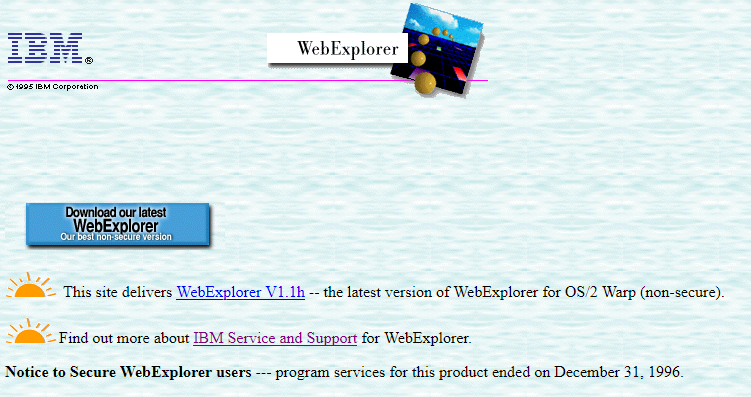
IBM WebExplorer was an early web browser developed for the company's OS/2 operating system. It was part of IBM's efforts to push OS/2 as an alternative to Microsoft Windows. WebExplorer was originally showcased in 1994 and released in early 1995.
Although the likes of NCSA Mosaic had working ports for OS/2, the WebExplorer was the first native web browser for the platform and benefited from this distinction.
It was also quite capable, featuring multithreading support, a 256-color image viewer, a full-screen Presentation mode, a web history management feature called WebMap, HTML 3.0, and a Usenet reader.
It could have had a bright future, but IBM was struggling to compete with Windows in the PC market. Once IBM realized that it was losing the operating system war, it reduced investment in OS/2 and, by extension, in WebExplorer. IBM's web browser also faced intense competition from Netscape Navigator, which was launched around the same time but proved to be much more popular.
In a telling sign, IBM also started including a link to download Netscape Navigator 2.02 for OS/2 Warp 4, indicating the Netscape offering was superior.
The WebExplorer was officially discontinued around 1998.
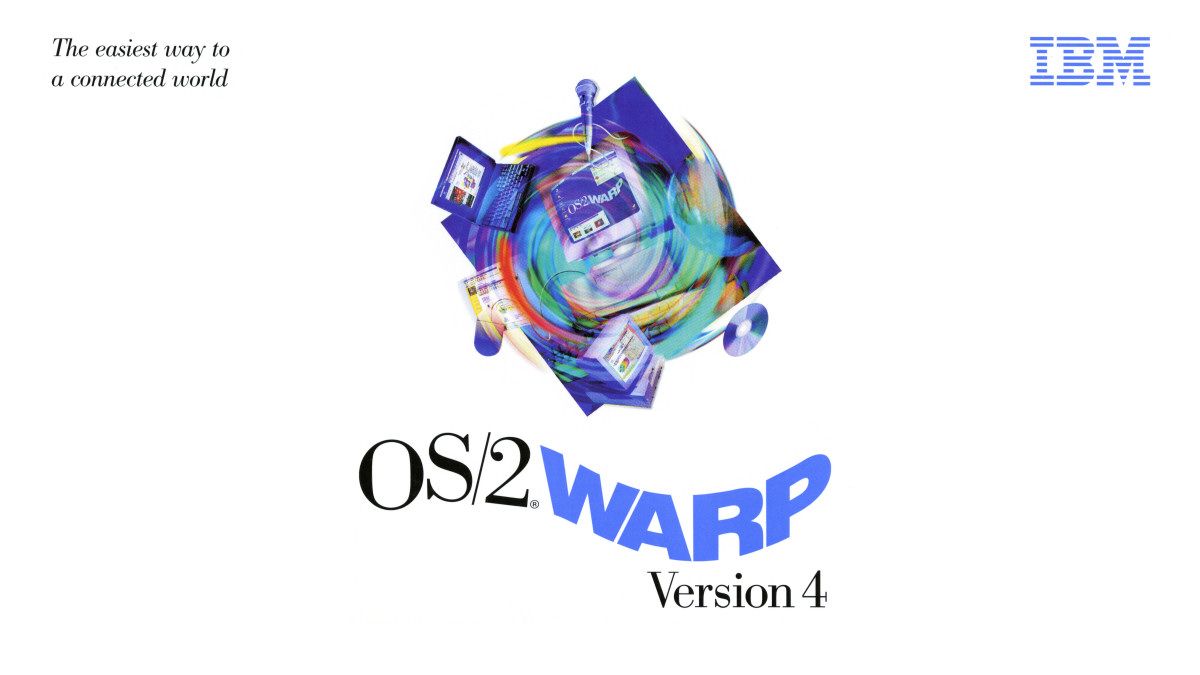
OS/2's Last Stand: IBM OS/2 Warp 4 Turns 25
The frustrating failure of a competent OS---that still lives on.
1 WorldWideWeb
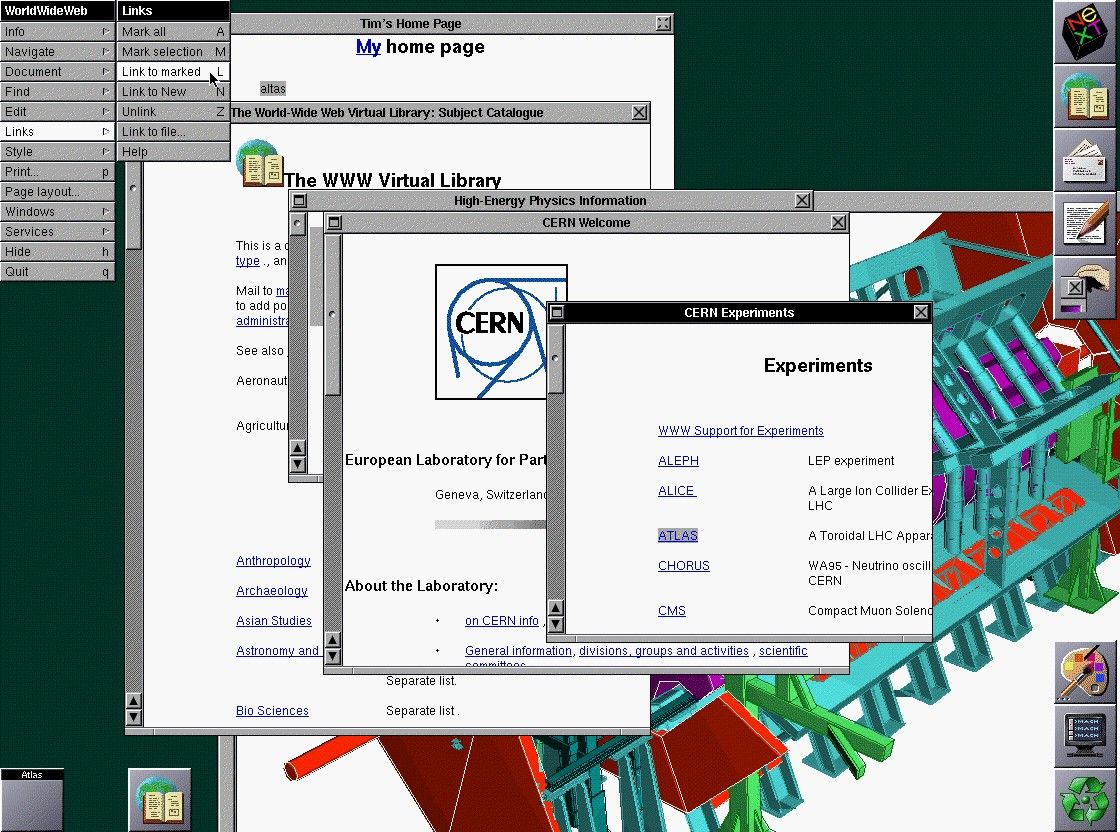
Everything started with the WorldWideWeb, which was the first-ever web browser. Created by Tim Berners-Lee in 1990, who is also widely recognized as the inventor of the internet itself. It was developed exclusively for NeXTSTEP, an operating system from NeXT Computer, a company founded by Steve Jobs.
Later renamed to Nexus to avoid confusion with the term "World Wide Web," the WorldWideWeb leveraged NeXTSTEP's impressive capabilities at the time to offer not only web browsing but also an HTML editor within the same program.
It could display text and simple images. However, images were initially displayed in separate windows. It also supported hyperlinks and had a graphical interface.
While it was never "popular" in a mass-market sense, it holds a monumental place in internet history as the first brick in the path to the internet we know today.
As newer browsers such as Mosaic started emerging, active development and support for WorldWideWeb ceased by 1994.

The First Website: How the Web Looked 30 Years Ago
Today, there are over 1.2 billion websites. Let's take a look at where it all started.
Ultimately, the story of web browsers is one of relentless competition and evolution. While modern web browsers, such as Chrome, Edge, Firefox, and Safari, dominate our screens today, they stand on the shoulders of their predecessors, which are no longer around.
If you are interested in the history of the internet, you may want to read about Windows 3.0, Windows 95, and the rise and fall of Internet Explorer,


